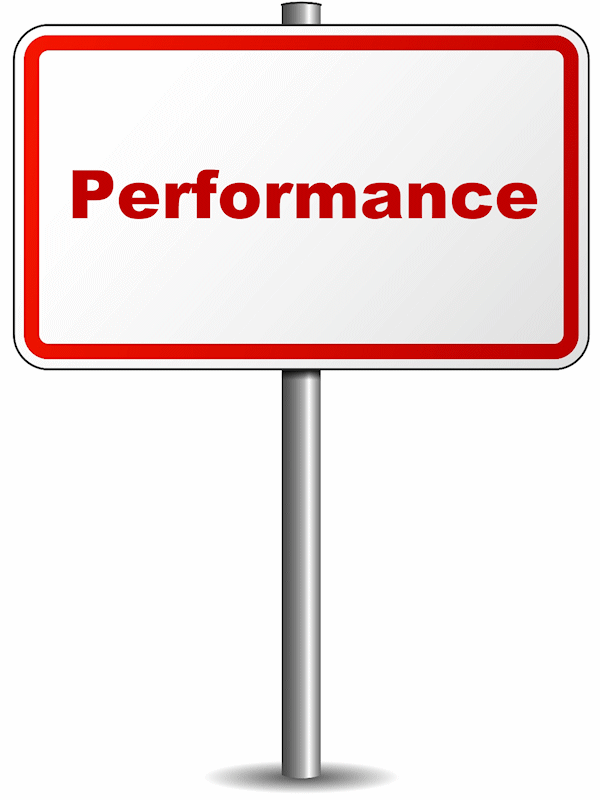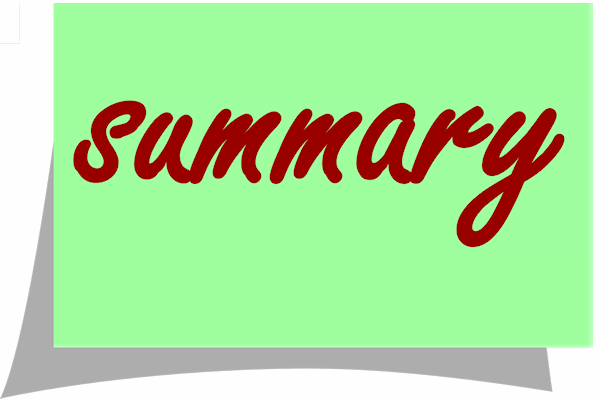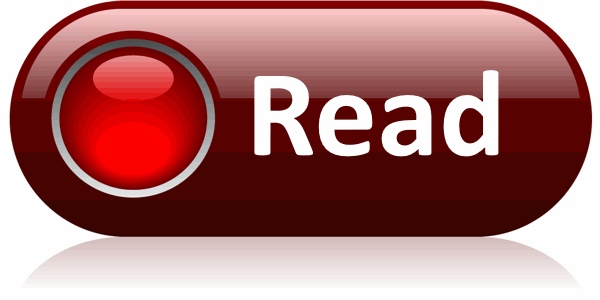By Mike Loughrin, CEO for Transformance Advisors
What is a Performance Management Model?
In today’s constantly evolving landscape, supervisors and their colleagues in human resources (HR) face relentless pressure to build a culture of high performance which maximizes productivity and fosters engagement. Yet, many organizations struggle with performance management where it feels more like an obligatory annual chore than a powerful lever for success.
A performance management model is much more than a list of boxes to check-off once a year. It’s a framework which “aligns individual goals, behavior, and development with the organization’s strategy”. When executed purposefully, performance management becomes a business driver, empowering employees to realize their full potential. It is not just extra work for supervisors and HR. Far from being just a checklist, it’s the set of principles and practices that enable leaders and teams to clarify expectations, set meaningful objectives, provide actionable feedback, drive employee development, and recognize performance.
Whether you’re using the classic annual review or a continuous feedback approach, the right model makes performance management a purposeful, ongoing process where both employees and the business can thrive.

A performance management model
“aligns individual goals, behavior, and development with the organization’s strategy”.
Annual Reviews vs. Continuous Feedback
Traditionally, performance management revolved around an annual process. They involve static objectives, after-the-fact evaluations, and the dreaded personal improvement plan (PIP). This process often led to disengagement, mismatched goals, and missed opportunities for course corrections. These “set it and forget it” systems created a risk that employees daily work would not be connected to the organization’s strategy. There could be a misunderstanding on the priorities or there could be a change in direction.
Newer continuous feedback models claim to eliminate the weaknesses of an annual process. They involve frequent feedback conversations and allow for quick course corrections if the organizational strategy changes. These continuous systems show promise, but tossing around words like real-time, optimized, and dynamic feels like some over-promising is taking place. They do seem to emphasize hitting the daily numbers which can lead to missing investment in long term employee development needs. There is also a risk that constant feedback will feel like and actually become micro-management.
Both methods place supervisors in the role of coaches, but will often be weak on how that works in the process. Writing a PIP or being a micro-manager are not what coaching is about. Other weaknesses with both methods include a lack of emphasis on data-driven decisions and using poorly defined measurements.
The debate will continue. An annual process is slow to respond and risks misalignment between employee actions and the organizational strategy. A continuous feedback process can lead to micro-management and placing too much emphasis on short term hitting the numbers.
Could there be a blend of the best parts of the annual and continuous methods?
Could there be room for greater emphasis on coaching, data analysis, and measurements which drive the right behaviors?

“I have not failed. I’ve just found 10,000 ways that won’t work.”
– Thomas A. Edison
Sampling of Performance Management Models
Choosing the right performance management model is pivotal to achieving real, lasting impact. However, no single model fits all situations. Organizations should blend principles and tools from several approaches depending on their unique circumstances. The best organizations recognize performance management needs to be agile, transparent, and inclusive.
A sampling of performance management models includes:
- Management by Objectives (MBO)
- Objectives & Key Results (OKR)
- 360-Degree Feedback
- Behaviorally Anchored Rating Scales (BARS)
- Balanced Scorecard
- Results-Only Work Environment (ROWE)
- Software-Based Performance Management
Let’s take a quick look at each of the above. Beware. There is a mountain of information on each of these models and the following is just a very short summary.

“Blend principles and tools from several approaches depending on your unique circumstances.”
Management By Objectives (MBO)
- What it is: Employees and leaders collaborate to set clear, measurable goals aligned to business objectives. Progress is assessed based on the achievement of these goals.
- Strengths: Increases clarity, autonomy, and accountability; employees know what’s expected and understand how their work fits the bigger picture.
- Drawbacks: Can be too rigid or top-down if not updated regularly; risk of focusing only on easily measurable outcomes.
- Best fit: Organizations focused on alignment and accountability needing to develop a culture of ownership.
Objectives & Key Results (OKR)
- What it is: A dynamic framework where ambitious, measurable objectives are set and broken into key results, reviewed and refreshed quarterly or even monthly.
- Strengths: Drives agility, transparency, and rapid learning. Keeps employees focused on what matters most as priorities shift.
- Drawbacks: Needs committed follow-through from leadership; risk of “set and forget” if reviews aren’t consistent.
- Best fit: Fast-paced, innovative, or growing organizations seeking agile goal alignment and rapid adaptation.
360-Degree Feedback
- What it is: Holistic evaluations that gather input from peers, supervisors, direct reports, and sometimes clients—with an emphasis on both strengths and growth areas.
- Strengths: Reduces bias, increases engagement, creates a more comprehensive view of performance and collaboration.
- Drawbacks: Can be overwhelming if not managed properly; needs clear guidelines and a culture of trust.
- Best fit: Teams or organizations emphasizing collaboration, leadership development, and well-rounded growth.
Behaviorally Anchored Rating Scales (BARS)
- What it is: Evaluation system anchored in specific, observable behaviors corresponding to each performance level, often tied to particular roles or skills.
- Strengths: Makes reviews more objective and actionable; clarifies what “excellent” looks like for each competency.
- Drawbacks: Resource-intensive to design and maintain; not suitable for highly fluid jobs.
- Best fit: Roles with defined, repeatable skills or customer-facing responsibilities demanding clarity.
Balanced Scorecard
- What it is: Integrates financial, customer, process, and learning/growth metrics, so performance is tracked from multiple perspectives, not just numbers.
- Strengths: Connects daily actions to big-picture strategy; encourages balanced, sustainable growth.
- Drawbacks: Can be complicated to track; needs ongoing data and commitment from leadership.
- Best fit: Midsize/large organizations seeking strategic alignment beyond financial goals.
Results-Only Work Environment (ROWE)
- What it is: Shifts focus from hours worked to results delivered—employees have autonomy over how, when, and where work is completed as long as outcomes are achieved.
- Strengths: Boosts engagement, accountability, and flexibility; ideal for knowledge workers or remote teams.
- Drawbacks: Not suitable for all industries; requires trust and strong goal-setting practices.
- Best fit: Flexible, project-based, or remote-enabled organizations prioritizing outcomes over process.
AI or Software-Based Performance Management
- What it is: Uses digital platforms and artificial intelligence to automate tracking, generate data-driven feedback, spot trends, and support development planning.
- Strengths: Quick insights, scalable, and can personalize learning and feedback. There are claims it can reduce bias, but that seems to be an exaggeration.
- Drawbacks: Ethical and privacy concerns; over-reliance on data can miss context or unique needs.
- Best fit: Organizations committed to continuous improvement and leveraging the latest HR technology.
“Performance management needs to be agile, transparent, and inclusive.”
Blend and Improve
Each of the models described above has a sequence of steps. Even the so-called continuous feedback models have routine steps. The steps bring a cycle providing structure and rhythm to how organizations plan, monitor, develop, and evaluate employee performance. When done right, the cycle of steps creates alignment, accountability, and ongoing opportunities for growth.
A common thread to the steps is some version of:
- Expectations
- Monitoring
- Evaluation
Let’s blend the best parts of each model to design the best sequence of steps for performance management.

1. Expectations
Setting clear, shared expectations is the engine for all high performance. When every employee knows what’s expected, and why their work matters, motivation, alignment, and engagement follow. Setting expectations involves:
- Documentation: Start strong with job descriptions that leave nothing to guesswork. Define responsibilities, required skills, and organizational context for each role. Have an employee handbook which enumerate federal laws and company policies to help decrease employee workplace errors and reduce legal exposure. Provide policies, procedures, and instructions which are relevant to the employees job.
- Role Education: Ensure employees understand what each duty really involves. This isn’t just for new hires. Regular “refresher” training keeps everyone aligned, especially as roles evolve. When people are educated on their duties, confusion drops and accountability soars.
- Goal Education: Employees are at their best when they see how their daily work supports the company mission. Research related to the use of OKR indicates strategic alignment inspires purpose and engagement. Every team member should know the key performance indicators (KPIs), how those metrics are tracked, and why they’re important. This practice, pulled from MBO and the Balanced Scorecard, makes performance management objective and actionable.
- Personal Goals: Empower employees to set and “own” personal performance goals. Collaboration in goal setting, while keeping them aligned with organizational priorities, gives employees a sense of ownership and control. When personal goals reflect business needs, everyone wins.
2. Monitoring
Monitoring isn’t about micromanagement. It’s about staying on course, catching issues early, and supporting growth. Leverage data to provide feedback and use coaching to drive improvement. There should be no end of the year surprises about how people are performing. Monitoring involves:
- Tracking: Use dashboards, regular check-ins, and ongoing progress tracking to see how employees are moving toward their goals. Integrate AI tools like predictive analytics for spotting risks early.
- Feedback: Frequent, specific, and actionable feedback is the backbone of continuous improvement. It should happen informally in the flow of work, and not just during formal reviews. Models like OKR and 360-Degree Feedback show that regular communication builds mutual trust and accelerates progress.
- Coaching: Great managers are great coaches. Instead of simply evaluating, provide ongoing guidance to help employees overcome challenges and develop their strengths. Coaching transforms everyday obstacles into learning opportunities.
- Intervention: When gaps or barriers are found, act fast. Interventions could include more training, new tools, workflow changes, or even job redesign. Timely intervention is crucial for turning setbacks into successes. Don’t wait for some annual review session. Intervene and make course corrections during the monitoring phase.
3. Evaluation
Evaluation closes the loop, providing insight into what’s working, where gaps remain, and how to drive lasting improvement. Similar to stepping back to reflect on how the organization has done, it’s beneficial to step back and evaluate how an employee has performed over the prior year. You can’t see the forest if all you do is look at yesterday and today. Evaluation involves:
- Assessment: Go beyond simple review scores. Use both quantitative data and qualitative input. Automated reviews can supplement supervisor perspectives, and potentially reduce bias. Leverage the objectivity of 360-Degree Feedback for a fair and actionable picture.
- Cause Analysis: If there’s a gap in performance, analyze the “why” and not just the “what”. Root cause analysis needs to digs into whether issues stem from skills, resources, motivation, or external factors. This approach leads to better, more targeted solutions. After a year on monitoring by the supervisor, an unexpected gap in performance could point more to the actions of the supervisor and less to the actions of the employee.
- Appraisal: Step back for a holistic view, not just isolated incidents. Assess alignment with organizational goals, growth over time, and overall effectiveness in the role.
- Development: Build a personalized growth plan, for each employee, based on their evaluation. This may include skills training, stretch assignments, mentorship programs, and education focused on the next promotion.
* Recognition
Don’t think of recognition as a step in performance management. Celebrate achievements, both big and small. Recognize excellent results and meaningful effort. Recognition should occur during the setting of expectations, monitoring performance, and at the time of an annual evaluation. Regular appreciation builds culture, engagement, and loyalty. A few ideas for recognition include:
- During the setting of expectations, you can recognize achievements such as completing a training program. There can be awards such as certificates of achievement or professional certifications. One organization trains all new employees on their Lean Transformation program and offers a chance to earn the Certified Lean Apprentice designation.
- During the monitoring step, you can celebrate best, or most improved performance, for the week, month, or quarter. Awards can include a round of applause at an all-hands meeting or a gift card to a local restaurant. One company recognizes examples of great customer service by handing out gift cards on the spot.
- Some forms of recognition are geared toward an annual cycle, such as top salesperson of the year. This type of annual award is an opportunity for all functional areas. It should not just be the sales department who celebrates great performance.
Summary
Performance management models provide a framework which “aligns individual goals, behavior, and development with the organization’s strategy”. Whether you’re using the classic annual review or a continuous feedback approach, the right model makes performance management a purposeful, ongoing process where both employees and the business can thrive.
A common thread to almost all of the models is some version of steps for setting expectations, monitoring performance, and evaluating performance. No single model fits all situations. Organizations should blend principles and tools from several approaches depending on their unique circumstances. The best organizations recognize performance management needs to be agile, transparent, and inclusive.

“If you can dream it, you can do it.”
– Walt Disney
Mike Loughrin is the CEO and Founder of Transformance Advisors. He also teaches for Louisiana State University Shreveport and is on the board of directors for the Association for Supply Chain Management Northern Colorado.
Mike brings exceptional experience in industry, consulting services, and education. He has directed several Lean Transformation programs and has helped organizations such as Levi Strauss, Warner Bros., Cabela’s, Constellation Brands, Lexmark, and Sweetheart Cup.
Keeping a commitment to a balanced life, Mike loves downhill skiing, bicycle rides, and hiking in the mountains. See one of his trails of the month at: Little Switzerland.
Best Performance Measurements
What’s Coaching All About?
Ideal Team Player
6 Leadership Principles
Performance Management Class
Subscribe to our newsletter
References
Management by Objectives by CFI Education Inc.
Ultimate Guide to OKR by Perdoo.
What Is 360-Degree Feedback? by the balance.
Behaviorally Anchored Rating Scale by Academy to Inovate HR (AIHR).
Balanced Scorecard Basics by Balanced Scorecard Institute.
Implementing Results-Only Work Environments by HR Vision.
AI in Performance Management by Academy to Inovate HR (AIHR).

